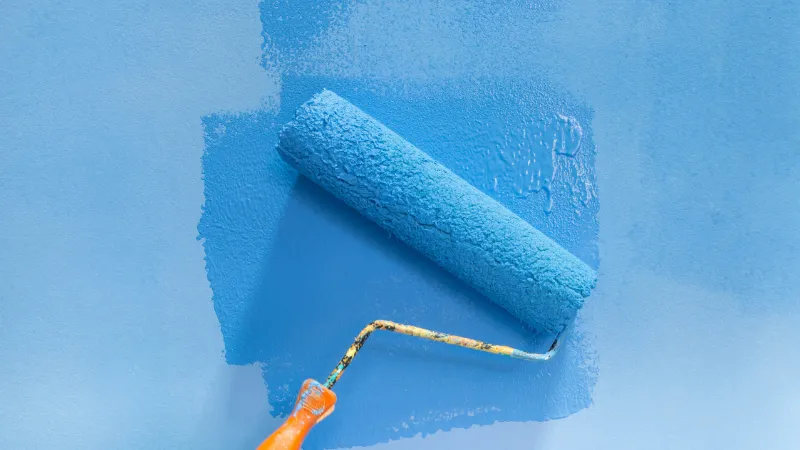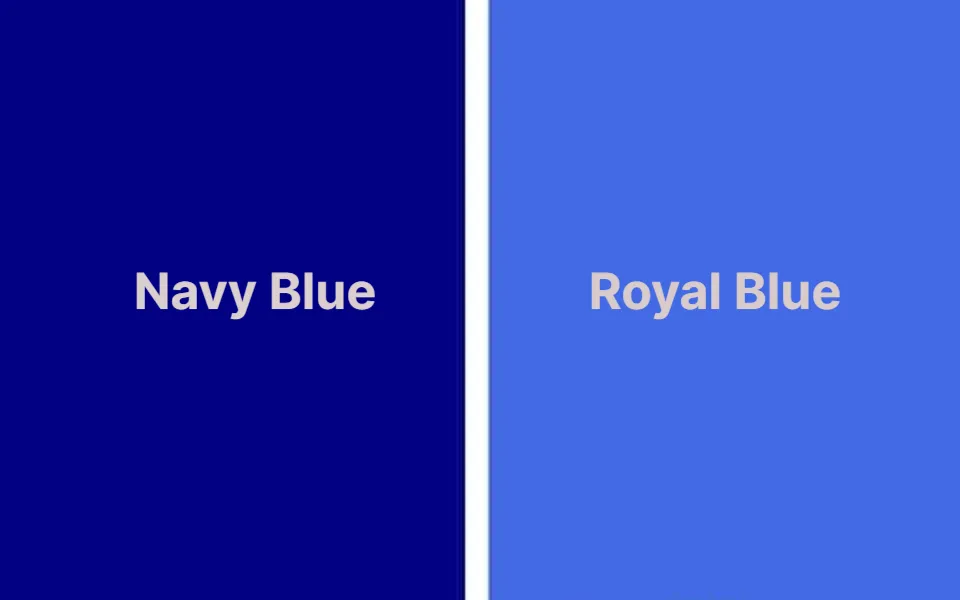Taking care with each step of your painting project makes all the difference in how beautiful a room turns out—and How long should you wait between coats? Most paint needs at least four hours between coats, but waiting eight hours or overnight is even better.
The amount of time to wait depends on the type of paint, the environment in the room, and other important considerations.
Number of Hours to Wait Between Coats of Paint
By Types of Paint
You have a number of options for interior paint, each with a specific drying time that is advised.
| Type of Paint | Time to Wait |
| Primer | Three to 24 hours |
| Water-Based | Four to 12 hours |
| Latex | Four to 12 hours |
| Acrylic | Four to 12 hours |
| Oil-Based | At least 24 hours |
Water-Based
Aim for a minimum of four hours between coats of water-based paint, and ideally eight to twelve. Although some paint can labels may state that you can recoat after two hours, it’s always best to err on the side of caution and allow more time for the paint to dry.
Latex
A second coat of latex paint shouldn’t be applied until it has dried for at least four hours. If you can wait between eight and twelve hours, your second coat will apply more smoothly because the longer you wait, the better the results you’ll get.
Acrylic
The ideal time between coats for acrylic paint is between eight and twelve hours, but you should wait at least four hours, just like with water-based and latex paint. Basically, if you can wait eight hours or overnight to make sure that your first coat cures properly to the wall, you’ll get even better results with water-based, latex, and acrylic paint. The bond between the first and second coats of paint will be stronger if the first coat is more dry. Additionally, there will be less chance for your wall to peel.
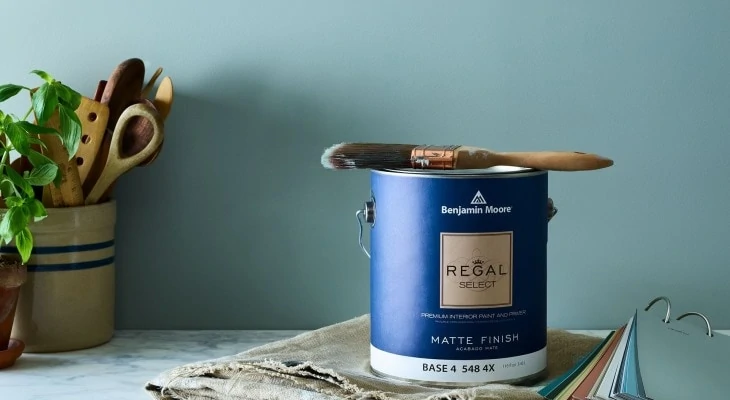
Oil-Based
Even more drying time is needed between coats of paint when using oil-based paints. Allow yourself a minimum of 24 hours between coats if the product is oil-based. Your second coat of oil-based paint will adhere even better if you can extend the time period.
Curing Time
Interior paint typically takes up to a month to completely cure. The amount of time it takes will depend on a number of variables, including temperature, humidity, the type of paint you used, and the surface you painted over. Your paint will cure in 30 days in particularly dry areas, whereas humid areas might take longer than a month. Be careful around freshly painted surfaces for the first 30 days after painting because while paint may feel dry to the touch in a matter of hours, it takes much longer for it to be fully cured.
If you’re painting the trim, such as wood trim around your windows and doors, give your first coat at least 12 hours before a second coat. No matter if it is real wood or composite wood, trim paint needs to soak in and harden on the surface.
In order to ensure that the second coat of paint adheres well and lasts as long as possible, lightly sand the wall in between coats of paint for the best finish. Before adding another layer, use a shop vac to vacuum the wall and a damp rag to wipe off the dust.
Suggested reading: One of the best ways to quickly improve the appearance and ambiance of a space where you probably spend a lot of time is by updating your kitchen cabinets. So, how much does it cost to paint kitchen cabinets?
Why Paint Recoat Time Matters?
There are many ways to ruin a good paint job. The final state of the paint can be impacted by a dirty or wet surface, humidity, temperature changes, and poor paint quality. However, applying additional coats before the earlier coats are completely cured is one of the surest ways to ruin your paint.
There is a waiting period before touching paint between coats. Before that period, the paint is still wet, liquid, and pliable. If more paint is required, such as for touch-ups, it can be applied. More coats may be applied after that, once the paint has completely dried.
But during that no-touch period, prior to the recoat time, you risk ruining an otherwise perfect paint job. The soft, gel-like substance develops pulls and streaks when partially wet paint is painted over. Pits and bubbles start to appear.
The cause of this issue is that everything below the topmost layer of dried paint—the “skin”—is still wet or gooey. Rolling or brushing the paint rips up the dry skin and mixes it in with the wet paint.
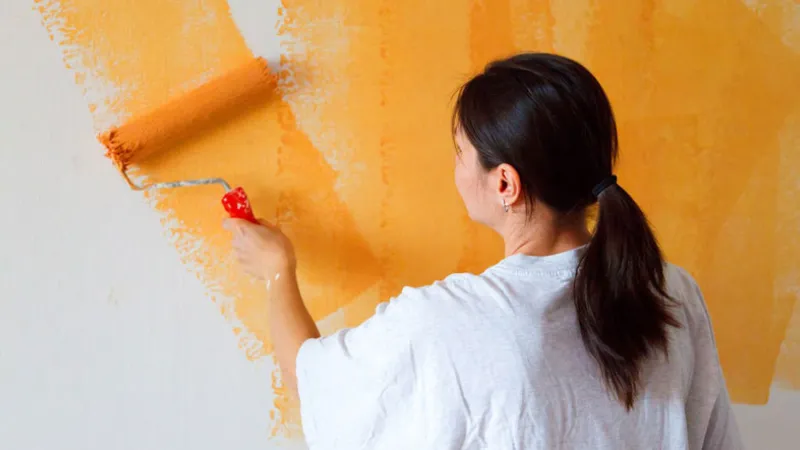
What Dry, Recoat, and Cure Mean
Thanks to advancements in paint technology, rooms can now be finished in a day or two rather than over several days. The drying process for each coat of paint must be finished before the application of the subsequent coat.
When using oil-based paint (also referred to as alkyd or solvent-based paint) or water-based acrylic-latex paint for interior painting, there are three specific time periods to be aware of.
Paint Dry Time
Paint dry time is the amount of time it takes for wet paint to become tacky-free and dry to light contact. Sometimes, paint manufacturers refer to dry time as “dry to the touch.”
Dry time is misleading when it comes to recoating. It is natural to assume that if paint can be touched with the fingers, it can also be touched with a paintbrush. The remaining paint, however, is still drying just below the top, dry layer of paint.
Paint Recoat Time
The amount of time it takes for the paint to be fully prepared before you apply another layer of paint is known as the “paint recoat time.” For flat latex paint, it can take as little as 30 minutes, or as long as 3 hours for glossy paint.
Paint Cure Time
The amount of time it takes for the paint to fully dry and become washable and more touchable is known as the “cure time.” Depending on the season and your climate, this may occasionally take weeks.
When recoating, you don’t have to be concerned about a paint’s cure time. For a perfect, smooth finish on your interior walls, trim, and cabinetry, stay within the following margins of dry and recoat times for both water-based and oil-based paints.
Factors That Affect Drying Time
Humidity
Your coat of paint may not dry if the humidity is over 50%. Always check the forecast for the few days you intend to paint to ensure it won’t get too humid. If you’re painting inside, consider using a dehumidifier to help draw moisture from the air and shorten the drying time.
Temperature
Temperatures that are any colder may cause you to wait longer between coats because most paints dry best when they are between 70 and 80 degrees Fahrenheit (21 and 27 degrees Celsius). Check the recommended drying temperature on the paint can and adjust your thermostat before painting interior walls. Wait a few days of warm weather without any rain if you’re painting outside.
Ventilation
The moisture in the paint has nowhere to go if there isn’t a lot of airflow in the area where you’re painting. Open windows and doors more, or use a fan to increase airflow in the space to hasten drying.
Paint Color
Compared to lighter shades, darker paint colors typically take longer to dry. If you’re working with black, brown, or any other dark color, allow an additional hour or two for drying time between coats.
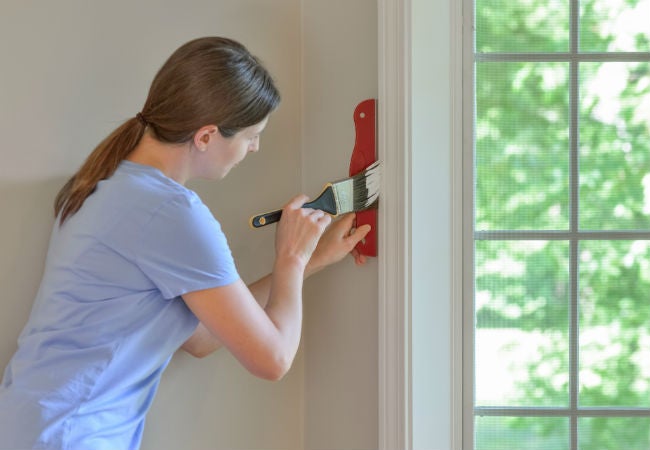
Application Method
Different application techniques may result in a thicker coat of paint, which may lengthen the drying process. The paint will apply to your walls more evenly and in a thin layer if you use a paint roller as opposed to a brush.
How You Apply Your Paint Affects Drying Time
There is no denying that the method you choose to apply your paint—whether roll-on painting, spray painting, or a good old-fashioned paintbrush—will affect how quickly it dries. Let’s examine these two application techniques more closely.
Roll-On Method
Your paint will dry more quickly the thinner it is applied. Thus, you should use a roller to apply your interior paint if you want to skew toward the shorter dry-time windows.
Paint Brush Method
Longer drying times result from thicker paint coats, however. So, if you have the patience for it and the time is on your side, go ahead and pick up a paintbrush to apply your interior paint. Just keep in mind that drying time will be somewhat prolonged.
Spray Method
Depending on how slowly you move over the areas you’re painting, spray painting gives you the option of applying thin coats of paint or thick coats. The thickness of the coat will increase as you spray more paint onto the surface. A thick coat also means a longer drying time, as was already mentioned. On the other hand, if you spray a thin coat of paint, it will dry to the touch faster and be ready for another coat.
What Happens If You Paint Another Coat Too Soon?
If you apply the topcoat of paint to a wet surface, it might peel or crack.A surface that hasn’t had enough time to fully dry may look patchy or uneven when you touch it up or apply another coat of paint. As a result of the moisture getting trapped between the layers, there may eventually be bubbling or peeling away of some of the layers. More paint will adhere properly once the base coat is completely dry before being applied.
- Simply wait until the following day to add the next coat of paint if you’re ever unsure of how long to let it dry.
What Can I Do to Ensure An Even Second Coat?
To ensure even distribution on the walls, a second coat of paint is crucial. Additionally, two coats make the paint more resilient and prevent it from chipping and fading.
When applying your second coat, there are a number of things to take into account. These include:
Curing Time
Whether or not your walls are ready for a finish coat of paint cannot be determined solely by touch. Time is needed for each coat to fully dry. The kind of paint used is also important. Only two to four hours are needed for latex paint to cure. The gap between the first and second coats of oil-based paint can be up to 24 hours.
Treatment of Tools
Brushes or rollers used to apply paint may start to dry out if they are exposed to the elements. When this occurs, coating a roller or brush for a proper application of the second coat is challenging. Accordingly, the finish coat’s surface might be uneven. All painting tools should be wrapped in plastic wrap and kept in the refrigerator for best results.
Painting Technique
Paint should be sprayed on the walls in the same pattern as the first coat in order to ensure an even application. Experts advise rounding off all edges first. Once all of the edges have been neatly painted, you can use a roller to paint a big W on the walls. Then, to ensure an even distribution of color, fill this in with paint by rolling in an upward and downward motion.
Color Consistency
Dark paint colors have a lot of pigment, which when left to rest may sink to the bottom of the paint can. The paint should be thoroughly mixed before being poured into a paint tray to load the roller.
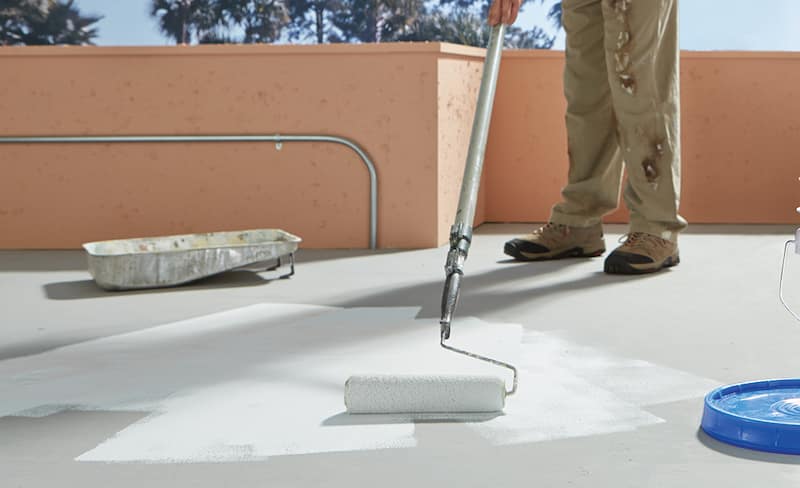
How Many Coats of Primer and Paint?
Depending on the surface you’re tackling, here’s how many coats of primer and paint you need:
Painting a wall or ceiling for the first time: You should always use a separate primer plus two coats of paint. Although some paints claim to be a two-in-one primer and paint, for best results, use a primer first.
Painting an already painted wall: No need for primer.
Changing the color of the wall: Painting with two coats is advised.
Keeping the color the same: Typically, one coat is sufficient to give skin a new look.
Painting a ceiling: In particular, if your ceiling is white, one coat of paint—after primer if it’s a new ceiling—is sufficient.
FAQs
What Will Happen If a Second Coat of Paint is Applied Too Soon?
Pulls and streaks could be produced in the supple, gel-like material if a second coat is painted while the first coat is still wet, liquid, and malleable. Pits and bubbles appear. Rolling or brushing the paint rips up the dry skin and mixes it with the wet paint because everything beneath the top layer of paint is still wet.
Can You Wait Too Long Between Two Coats of Paint?
Up to a certain point, you should let your paint dry completely between coats. It’s acceptable to postpone adding a second coat of paint for up to 7 days, and some manufacturers even advise doing so. But if you wait too long, elements like dust, UV rays, and more can alter the color of the paint and affect how a second coat will appear.
Why Are My Painted Walls Patchy?
When paint is applied unevenly or not enough paint is used for the surface area, it can lead to patchy walls. Inadequate paint drying in between coats is another possibility.
Read about How Long Does It Take to Paint a Room?
Summary: How Long Should You Wait Between Coats of Paint?
You’ve finally managed to hang that new shade on the wall, but right now you’re just sitting and waiting for the paint to dry. Would it really be that bad to put on a second coat right away? And here’s why: Yes, it would. Despite the fact that paint may feel dry to the touch after about an hour, it may take at least four hours for latex paint or even an entire day for oil paints before you can touch them up or recoat them.
Please post a comment if you have any queries.
